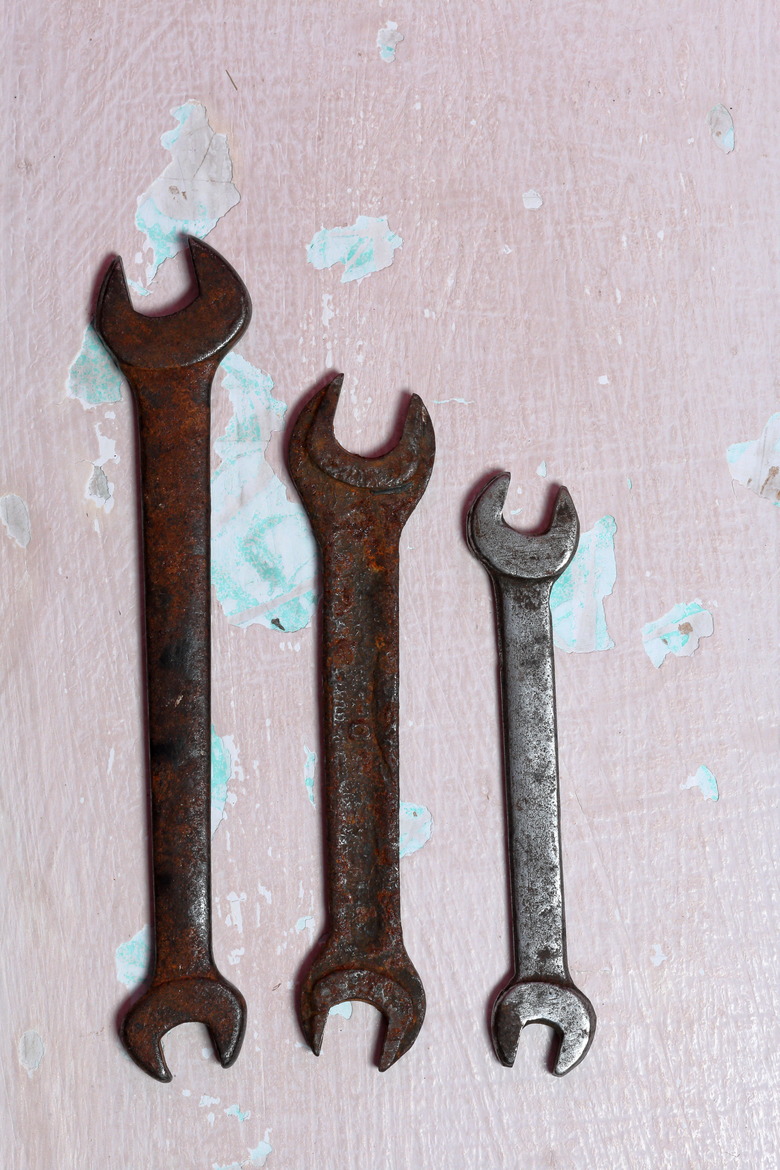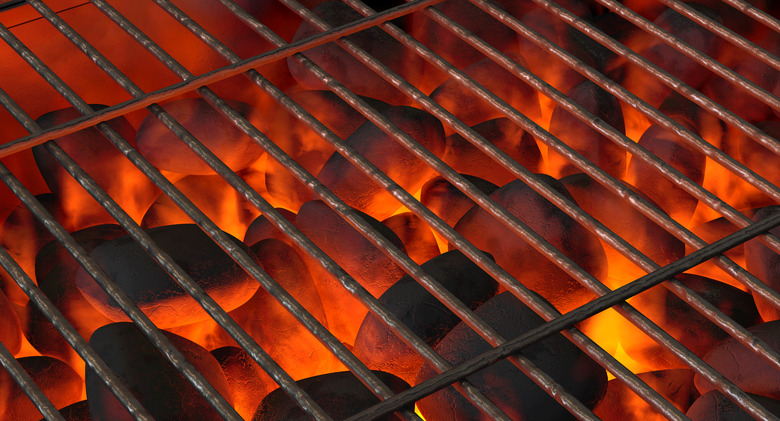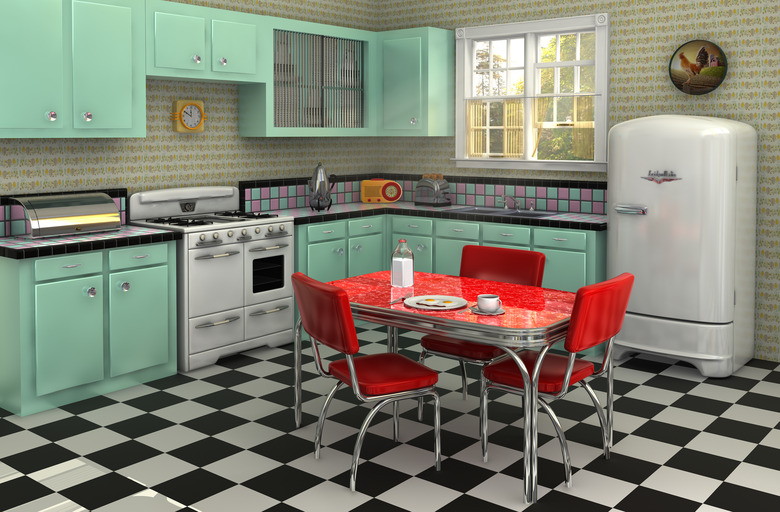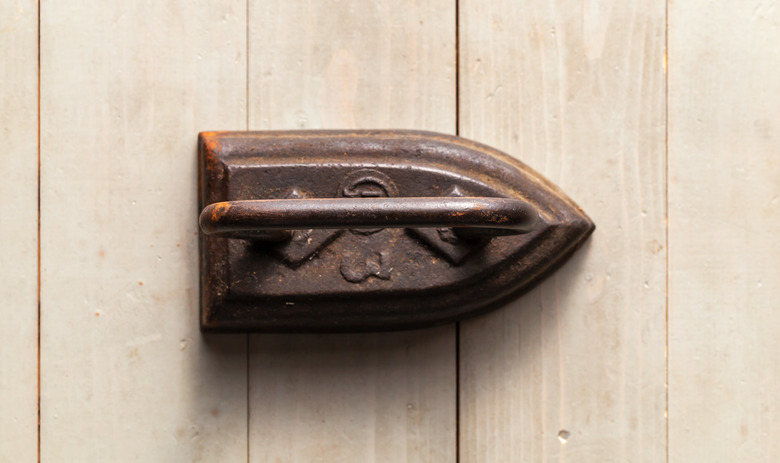How To Remove Rust
Where there's iron, there's a potential for rust. Items left outside or stored in a damp garage or humid environment may need a rust-removing treatment from time to time. The best way to tackle the issue depends upon severity of the rust and the type of item at hand. In most cases, it's best to start with non-toxic, gentle methods, relying on harsh chemicals only if nothing else does the trick.
How to Remove Rust with Vinegar
Things Needed
-
White vinegar
-
Fine steel wool
When it comes to kitchen utensils and any metals that might come into contact with food, a non-toxic rust removal method is a must. Vinegar works great at removing minor amounts of rust from knives and metal tools, such as wrenches and pliers. To remove rust from such items, soak them overnight in a shallow pan of white vinegar. Use fine steel wool to remove any remaining rust spots, then rinse and dry the metal object afterwards. Vinegar also helps loosen nuts and bolts and other items that have rusted together over time.
How to Remove Rust With Lemon and Salt
Things Needed
-
Whole lemon
-
Table salt
-
Wire brush or fine steel wool (optional)
Lemons and salt aren't just for pairing with shots of tequila. They're also good for removing light rust spots from items such as a stainless steel sink. The acid in the lemon helps bleach and remove the rust, while the salt serves as a mild abrasive. Sprinkle salt over the affected area, then squeeze fresh lemon juice over the salt. After an hour or so, use the cut portion of the lemon to rub the salt into the rusty spot. If the rust remains, try a wire brush—fine steel wool for delicate items.
How to Remove Rust from Barbecue Grill Grates
Cast iron and stainless steel grill grates also require non-toxic care when it comes to removing rust. Even the classic wire grill brush can be potentially dangerous, as bits of wire left behind could get into food. The wire may also damage any protective coating on the grate.
Things Needed
-
Nylon brush
-
Cloth
-
Baking soda
-
Paper towels
-
White vinegar
-
Table salt
- To remove rust safely, first clean as much gunk off the grates as possible, using a nylon brush. For a gas grill, wet the grate with a damp cloth, then sprinkle baking soda on the grate.
- Turn the grill to low or medium, waiting for the baking soda to bubble. The bubbling process helps remove rust.
- Turn the grill off, allow the grate to cool completely, then scrub the grates with a nylon brush.
- Finish by wiping the grate down with a damp paper towel.
For any type of grill, a soak in a vinegar and salt solution also works.
- Add two cups white vinegar and one cup table salt to a bowl or pitcher (there's no need to stir the solution).
- While working outside, place the grill grate in a large plastic trash bag, then pour the salt and vinegar mixture over the grate.
- Tie the bag closed, allow the grate to soak overnight, then scrub it with a nylon-bristled brush.
Notes: Porcelain grill grates that rust should no longer be used, as the porcelain coating has been compromised. To help prevent rust on steel or iron grates, wipe them down with cooking oil at least once per season or as needed, depending upon how often the grill is used.
How to Use Foil to Remove Rust From Chrome
Chrome items such as vintage table legs, drawer pulls and bathroom or kitchen fixtures can also fall victim to rust spots. Removing rust from these begins with an item you probably have on hand: aluminum foil. The friction of wet foil rubbed on chrome creates a chemical reaction that helps dissolve rust. As an added bonus, it also creates its own chrome polish. Aluminum foil is softer than chrome, so it won't scratch the material, as some abrasives might.
Things Needed
-
Microfiber cloths
-
Aluminum foil
- Clean the chrome first with a damp microfiber cloth to remove dust and dirt.
- Tear aluminum foil into strips 3 or 4 inches square.
- Sprinkle a little water on one side of the foil, then rub the wet part of the foil over the rusted chrome. Minimal pressure is required, as the chemical reaction will do most of the work for you.
- Keep rubbing until the chrome beneath the foil feels smooth and a brownish paste develops.
- Wipe this paste away with a clean microfiber cloth.
Note: if the rust seems particularly stubborn, repeat the process, this time sprinkling a little table salt on the wet foil.
Stubborn Rust Situations
Some situations call for more a more intense rust-removal process. For items that can withstand grinding or sanding, such as fence posts and lawnmower decks, sand with a coarse-grit sandpaper, which also helps remove any loose paint. A palm sander comes in handy for large projects; just be sure to wear a dust mask, eye protection and gloves.
A "rapid strip" grinding disc, designed to remove rust, lime scale and welding spatter, offers another great way to remove rust without harming the metal. Wire wheel brushes may scratch the metal, whereas the rapid-strip discs are made of a composite material that may contain silicon carbide, ceramics and resins. Attach the disc to a grinder or drill, then grind the rust and paint from the affected metal object. Again, eye, breathing and hand protection is a must.
Rust Removers and Converters
Environmentally friendly rust removers and rust converters also help tackle rust on metal. A rust remover is usually a liquid, designed specifically for soaking items such as hand tools. Some gel versions exist as well. These types of rust removers aren't as harsh or toxic as some of the acid-based rust removers on the market, and although they take several hours or longer to remove rust, the liquid may be used again.
Rust converters, on the other hand, create a chemical reaction on rusty metal, turning it black. These require sanding or otherwise removing loose rust first. After the rust converter does its job, the item may be primed, painted or left as-is. With any of these products, read the label first to ensure the product is right for the task at hand.
References
- Architectural Digest: How to Remove Rust from Metal Knives, Tools and Objects
- Slippery Rock Gazette: How to Remove Rust from Chrome Using Aluminum Foil
- Farmer's Almanac: Six Natural Rust Remedies
- Sub-Zero: Clean Outdoor Grill
- Gold Eagle: Remove Rust from Chrome and Prevent Future Rust
- Thermopro: Ultimate Guide to Remove Rust from Grill
- The Rust Store: How to Use Evapo-Rust
- Blaze Rapid-Strip Discs



